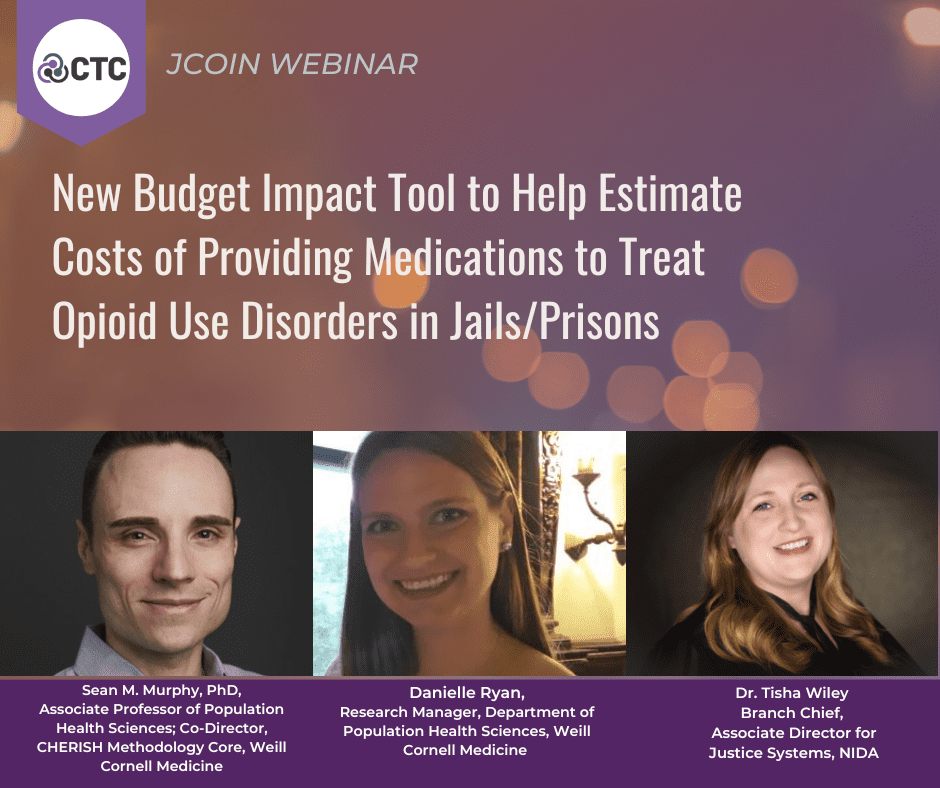Budget Impact Tool to Help Estimate Costs of Providing Medications to Treat Opioid Use Disorder in Jails/Prisons
Despite the evidence that providing medications for opioid use disorder (MOUD; i.e., methadone, buprenorphine, and naltrexone) at the point of incarceration and during reentry reduce the risk of overdose death, decrease recidivism rates, and improve the well-being of the individual, financial and administrative limitations in jail/prison healthcare often serve as barriers to this recommended first-line treatment for OUD. In fact, evidence indicates that more than 80% of incarcerated individuals with a history of OUD do not receive life-saving medications during their stay.
Fortunately, there has been a substantial increase in the number of jails and prisons offering MOUD in recent years. This trend can be attributed to both the initiative of individual facilities and state legislation mandating the provision of MOUD. However, the resources and associated costs required to implement MOUD programs in jails and prisons can vary widely depending on the availability of services and the chosen delivery model.
With support from NIDA’s Justice Community Opioid Innovation Network (JCOIN), researchers at Weill Cornell Medicine developed a customizable budget impact tool to assist jails and prisons with identifying an optimal MOUD delivery model, based on existing resources, and the costs that would be required to implement and sustain the model at their facility.
The tool captures critical nuances of the individualized budgeting process and accompanying tradeoffs faced by decision-makers of carceral settings who are interested in offering MOUD. For example, facilities may be looking to offer pharmacotherapy for the first time or expand a current model, such as offering extended-release naltrexone upon release from incarceration only. Moreover, MOUD delivery can be done by the facility’s healthcare team, on-site vendor, or both. Alternatively, facilities may transport patients to an off-site treatment provider.
The budget impact tool, which was already being used by a number of carceral facilities, is now publicly available and paired with an open-access, peer-reviewed manuscript that serves as a user-friendly guide.
Read the open-access article published on January 26, 2023, in the Journal of Substance Use and Addiction Treatment.
The Budget Impact Tool for The Incorporation of Medications for Opioid Use Disorder into Jail/Prison Facilities is available for download on our resources page.


